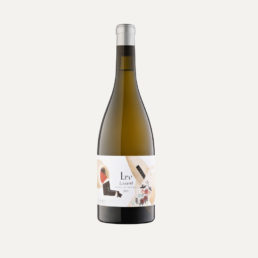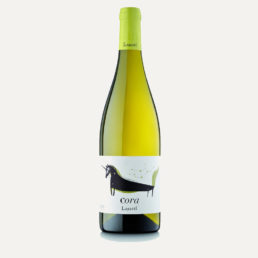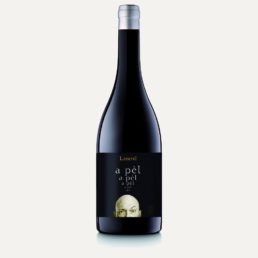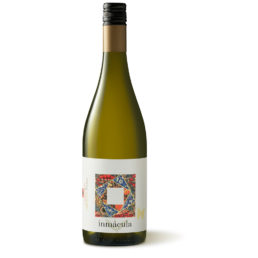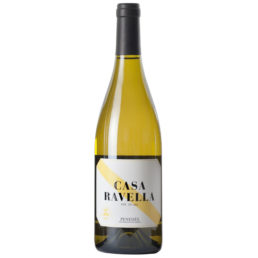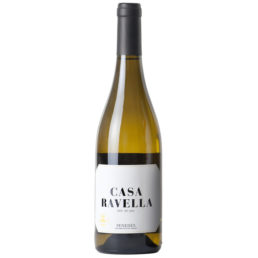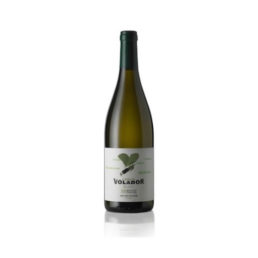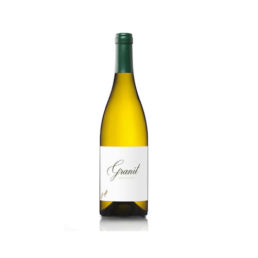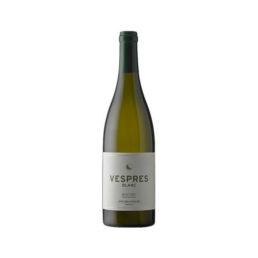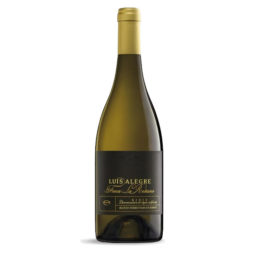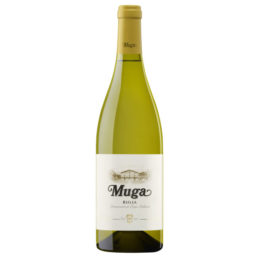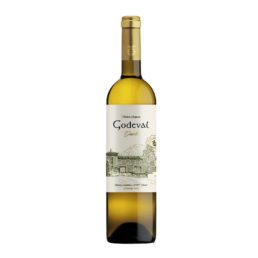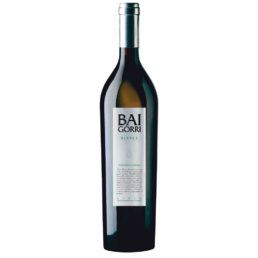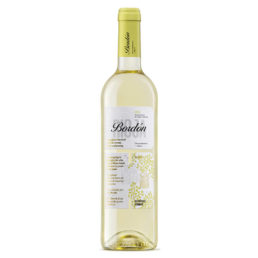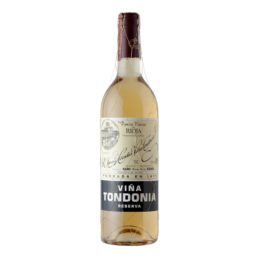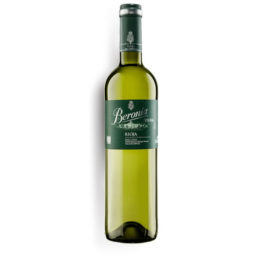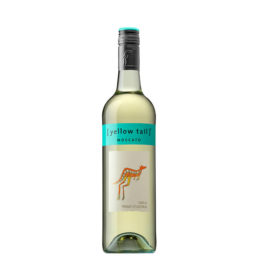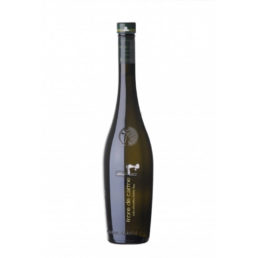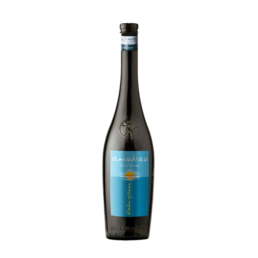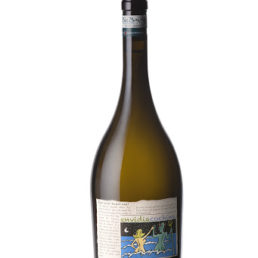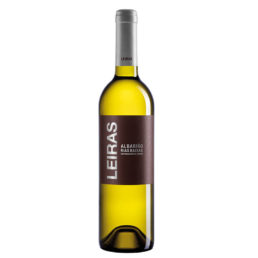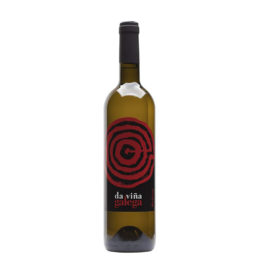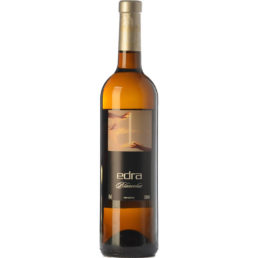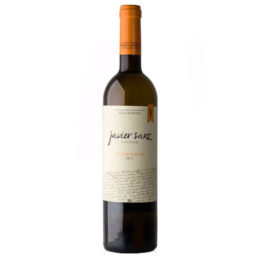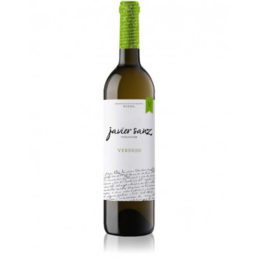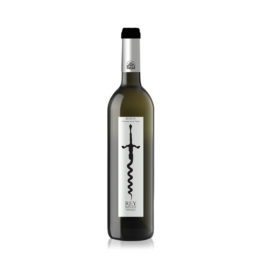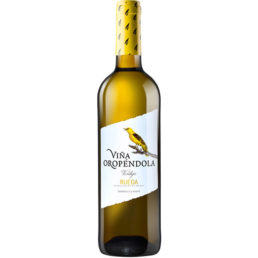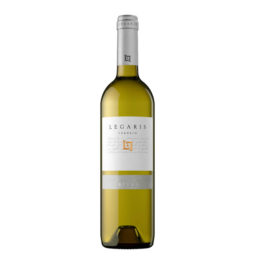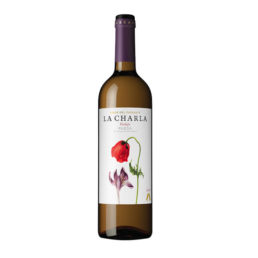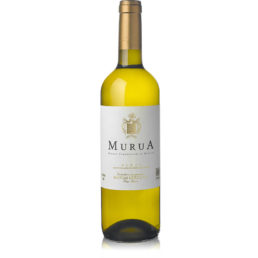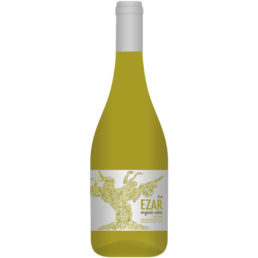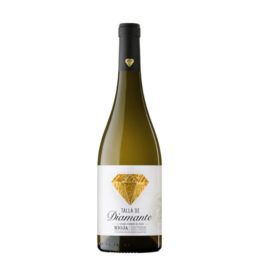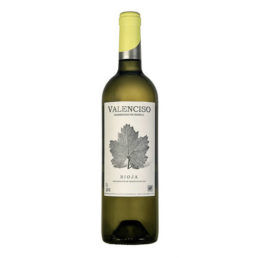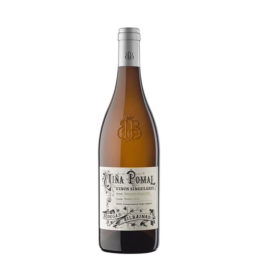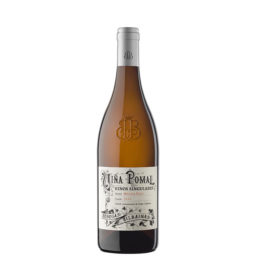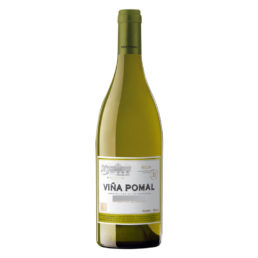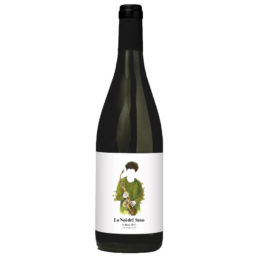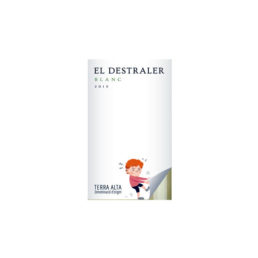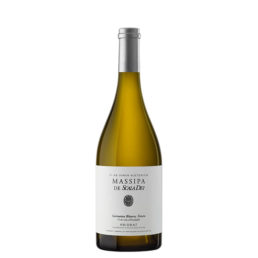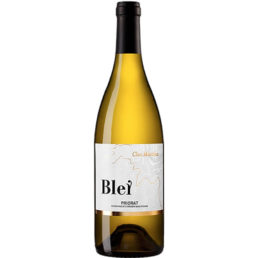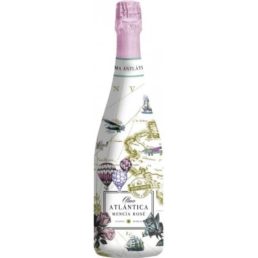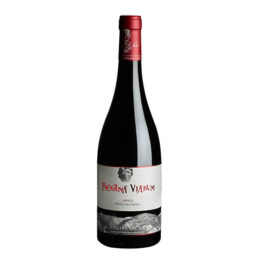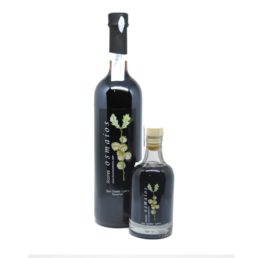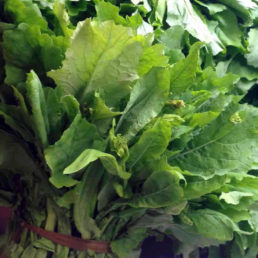White Wine
- You cannot add "Vino blanco Josep Grau - Granit 2018" to the cart because the product is out of stock.
-
White wine, Loxarel – LXV of Loxarel (ecological)
Elaboration
Viticulture, organic and biodynamics. From vineyards situated in the municipality of Les Cabanyes (Alt Penedès), to 5 km of Vilafranca and 250m of altitude on the sea level. Mashing with part of the grapes whole. The grape skin provides us with protection, structure, aromas and complexity.Pairing
The majority of fish little spicy or with white sauces, especially tuna or salmon. Appetizers and rice dishes. -
White wine, Loxarel – Cora (ecological)
Elaboration
Viticulture, organic and biodynamics. From the vineyards themselves are located in the Alt Penedès, at an altitude of 500m above sea level. The Xarel lo comes from our farm in Vilobí del Penedès, in what is known as the Xarel·lo Triangle. Maceration with the grape skin during 6 hours, with carbonic snow, in order to respect the aromas and prevent oxidation.Pairing
Ideal to accompany appetizers, was, oysters, shrimp cocktail, fish and rice. In general, it combines very well with all mediterranean cuisine. -
White wine, Loxarel – A Pèl blanco xarel lo 10% amphora (ecólogico)
Elaboration
Viticulture, organic and biodynamics. Xarel lo from the Can Mayol estate, located at 250m of altitude. Manual harvest in boxes, choosing the healthiest grain and treating it with much care. Fermentation during 4 weeks in tanks with the whole grain with the skin of the grape where you will find them protective and tannins that prevent the oxidation. Later resting in jars of clay 720 litres for 3 months. Wild yeasts. Contains No sulfur dioxide added. Has not been subjected to any treatment, clarification or filtration. Natural wines are made with great work in the vineyard and minimal intervention in the winery.Pairing
By its structure and complexity, invites you to take it only. Ideal for sharing with the curious and wine lovers. Recommended to accompany dishes of japanese cuisine (sushi). -
White wine Tandem – Inmácula
Inmácula In Latin, without stain. A different white fermented in French oak and kept on its fine lees for three months to gain texture and complexity. Winemaking After you remove the stems, the grapes macerated whole for a few hours in the tank. Sangramos the first wort and filled the barrels 300 liter French oak where it ferments at a temperature of 17-18 ºC Once the fermentation terminated, we begin with the bâtonnage journal, the process in which we mix the wine with the lees in order to get more volume in the mouth. Press harvest 2013 - 90 points Wine&Spirits magazine, 90 points STEPHEN TANZER, 90 points ROBERT PARKER harvest 2014 - 90 points STEPHEN TANZER 91 points PEÑIN Guide -
White Wine Crianza White House Ravella (ecological)
SOURCE Alt Penedès. Penedès denomination of Origin. Own vineyards of our farm House Ravella ('ordal). VINIFICATION AND AGEING Only own harvest. Manual harvest with selection of the grapes in own vineyard. After you get the “flower must” proceed to ferment in oak barrels, where later will be a minimum of six months on its own lees. -
White wine Young White House Ravella (ecological)
SOURCE Alt Penedès. Penedès denomination of Origin. Own vineyards of our farms Montargull and The Doghouse (St. Sebastià dels Gorgs) and Home Ravella ('ordal). DEVELOPMENT Only crops own. Manual harvest with selection of the grapes in own vineyard. To obtain the “mosto flor” in pneumatic press. The clarification of the wort has been carried out using a decanting static. The fermentation is carried out by controlling the temperature, in stainless steel tanks. -
White wine Josep Grau – L’ Efecte Flying Blanc 2019
Viticulture and Vineyards The grapes for this wine comes from an estate of Marca (The Priorat) with clayey soils and decomposed granite. Vines 5 years of age. Organic cultivation. The work is carried out 100% manually. Winemaking The grapes are harvest and pressed slowly in a pneumatic press for a period of 6 hours to perform a extraction slow of all the aromatic potential of the variety. Ferments for 15 days in stainless steel tanks, where it will remain after 5 more months to finish maturing. -
White wine Josep Grau – Granit 2018
Viticulture and Vineyards Vineyard nestled in the terraces at Starting I Eat, at a height of 450 metres and very exposed to the wind coming from the sea. Soil 100% decomposed granite, with very little water retention and are rich in minerals. Organic cultivation. All the work is carried out manually. Vintage in boxes 10 kg. Winemaking Pressed during 7 hours. Fermentation and aging in foudres of oak, austrian and German 2.000 litre capacity. Aging during 9 months with the lees. -
White wine Josep Grau – Vespres white
THE VINEYARD AND VITICULTURE: Farm 6 has. in the municipality of Marca (The Priorat) of 15 years of age, in soils of decomposed granite. Organic cultivation. All the work is carried out 100% manually. Vintage in boxes 10 Kg. VINIFICATION: Indigenous yeast. Pressing 6 hours and spontaneous fermentation foudres of 2.000 litre capacity. Parenting during 5 months on its lees in the same foudre fermentation. -
White wine Luis Alegre – Finca La Reñana
GREAT WINES FROM SMALL ESTATESElaborated with grapes from Vineyards of Finca La Reñana, of 85 years old, located in the foothills of the Sierra Cantabria, to 650 m. with low returns (3.500 kg/ha) that allows slow ripening and slow. Vineyard Finca La Reñana, of 85 years old, located in the foothills of the Sierra Cantabria, to 650 m. with low returns (3.500 kg/ha) that allows slow ripening and slow.Vintage manual boxes 15 kg. Selection table. fermented barrels 7-8 months on its own fine lees. Battonage newspapers to extract proteins and sugars, and that they flow the wine. Special oak forest atypical from the Bertranges. Acknowledgements Peñín: 91
Peñín: 91 Tim Atkin 94
Tim Atkin 94 Wine Advocate/Parker 91
Wine Advocate/Parker 91 Stephen Tanzer 94
Stephen Tanzer 94 -
White wine Muga 2017
The master of Bodegas Muga when working with oak is not just limited to the reds. Your white Muga 2017 it is an excellent example of the good work being done that has created school. Elaboration After approximately 8 hours of maceration in the press, this white wine is fermented in new barrels of French oak. After the fermentation remains with its lees during 3 months before being bottled. Pairing Perfect pairing for vegetable dishes, rice, seafood, tapas... -
White wine Bodegas Baigorri – Baigorri White Fermented in a Barrel 2014
White wine elaborated with grapes of the variety Viura and Malvasía. Macerated a few hours with their skins for later move to press. The fermentation and aging is done in new barrels of French oak with a toasty-specific, together with their lees, batonándose regularly during 8 months.Pairing Wine is especially indicated for any kind of fish. For its preparation and its structure allows to combine even meat light poultry such as chicken, turkey, partridges, duck...and the different ways to make it. It is a specially selected wine to snacks of cheese, tables of iberian and nuts. -
White wine – Staff
Vineyards Bordón blanco is a dry white wine, made from the white grape variety native to most classic of Rioja, Viura. This variety is also known as Macabeo in other areas, mainly in Catalonia. We use grapes from vineyards of The Rioja Alta that result in this wine of great balance with fruity notes.Elaboration Extraction of the must and fermentation in stainless steel tanks at a controlled temperature of 16 C to enhance the fruity aromas of the variety. Pairing Fish, seafood, vegetables, vegetables, appetizers and goat cheese. -
Viña Tondonia Blanco Reserva 2009
Viña Tondonia Blanco Reserva 2009 ( See very limited article ) Between 1913-1914, Don Rafael Lopez de Heredia and Landeta, to the couple that was building their industrial facilities, carried out the plantation Viña Tondonia, giving origin to the most well-known product of the winery. The Viña tondonia estate is a beautiful vineyard of over 100 ha, situated on the right bank of the river Ebro, where they grow the vine most typically riojanas. The Viña tondonia estate is the most spectacular in Haro. Located in a conch shell and embraced by the Ebro river, forming a peninsula, makes up a landscape of alluvium, limestone and poplars. -
Viña Gravonia Crianza 2012
Characteristics of the harvest: Year officially qualified as VERY GOOD. Year that goes by without incidents of weather severe, in the absence of spring frosts, but marked by abundant spring rainfall and post-harvest, however a summer of benign and drier favored the ripening and health of the grapes which resulted in the obtaining of a harvest it is not very abundant but of similar quality to that of the previous year. The weather was exceptionally favourable during the whole of the final phase of the vegetative cycle, something that is always decisive for the quality of the harvest. Our vineyards enjoyed optimal conditions for the health status of the fruit was virtually perfect, and the maturity to evolve with parameters, balanced color, acidity, alcoholic strength, etc., what that has allowed us to obtain a harvest of high quality and something lower on your final volume to the previous. The work of collection of the grapes began on the day 6 October in “Viña Gravonia” with the white grape varieties, the day 9 October in “Viña tondonia estate” with the varieties and finalized the 30 October after harvest “Viña Cubillas” and “Viña Bosconia”. Aging in barrel: 4 years old, subject to 2 rackings per year. Clarified with whites of fresh eggs. Limited production: 13.000 bottles. Pairing: cooked fish, fried or grilled, spicy. Seafood cooked a la plancha. White meats with sauces consistent. Combines well with pasta. -
Vino blanco Beronia Blanco Viura
VINIFICATION AND AGEING Wine with a strong personality due to its production. Cold maceration of must in contact with the skins getting to extract the primary aromas from the variety.PAIRING Ideal to accompany salads and white fish in all their different elaborations, as well as white meat and little fat. -
Vino Blanco Yellow Tail Chardonnay
The philosophy behind the brand Yellow Tail is to offer wines simple oriented to those who wish to enjoy a glass of wine with friends without major complications. Yellow Tail Chardonnay it is a white wine and fresh style lightweight, agrafeasible, refreshing, perfect to eat between friends or to celebrate the small joys of life. This wine is for sale in 40 countries -occur 100 millions of liters of wine per year- it has become the fourth wine brand most important of the world and the second most sold in the united States. DEVELOPMENT (VINIFICATION) Yellow Tail Chardonnay is made with grapes from vineyards of the highest quality. The fruit is pressed gently to extract the maximum freshness and flavor. The fresh grape clarified is fermented using a selection of different yeast strains. This adds complexity and texture to the wine end. The maturation of the lees of yeast, the malolactic fermentation and oak is used to impart creamy flavors of nougat, add richness and balance the acidity.PAIRINGIdeal to accompany seafood dishes, fish, or desserts. -
Vino Blanco Yellow Tail Moscato
Yellow Tail Moscato this is a white wine vibrant, full of flavor and personality. Yellow Tail Moscato is made with grapes from the best vineyards. The fruit is harvested in the cool of the night, to retain the maximum freshness and flavor. Para to ensure the smoothness on the palate, is used the must flower with a light pressed. The wine was stabilized and filtered cold to preserve all of its aromas.DEVELOPMENT (VINIFICATION)The Moscato Yellow Tail is made from grapes from vineyards of the highest quality. The fruit is harvested in the cool of night to retain maximum freshness and flavor. The must is obtained by leaving it out and applying slight pressure to ensure maximum softness in the mouth. Once developed, the wine is stabilized and filtered in cold to maintain their rich aromas and their freshness. Then assembled and added to a concentrated juice of grape to reduce their alcohol content.PAIRINGEnjoy Yellow Tail Moscato well chilled, as aperitif and with salad in summer. -
White wine Flore de Carme Albariño
Preparation with a unique, Frore de Carme it is one of the albariños more exceptional. Its creator, Eladio Piñeiro, only produces this wine in the vintages that he considers. The wine is dense and full-bodied, with a good balance of fruit and alcohol, glyceric and with many nuances. All this supported by a great freshness and minerality. Their vines have an average age of more than 25 years old, bringing more of the five transition to biodynamics. The external image of Frore de Carme is as neat as its contents, highlighting the following aspects: • Label thermo-sensitive, that lets you know the optimal temperature of consumption. • Glass stopper airtight, tested in the united States and on the Rhine, that allows corkage manual. The system favors the evolution of wine, prevents oxidation and maintains the spectrum of floral and fruity Albariño, avoiding defects of cork and conjuring the contamination by TCA or anisoles. • Design of the bottle, which represents an amphora modern glass top quality. • Iconography, logos and bottle designed by Eladio Piñeiro and made by the artist Jaime Asensi. Awards 93 points guide Peñín -
White wine Amodiño
Amodiño Albariño it is a singular wine of slow fermentation whose subsequent aging is carried out with its own lees, with the of add earlier and the later. It is precisely this peculiarity which gives it a unique character and an evolution in the bottle, rich in nuances, through his long life. Under the warranty that offers a Designation of Origin Rias Baixas, the vineyards of this Amodiño Albariño are distributed in privileged areas within the varied orography of the Valley of the Salnés and Ribeira del Ulla. The harvest of the harvest of the year 2015 occurred during the last week of September and first of October, carrying out green pruning and a later selection in each plot as the clusters reached its maturity. After the selection of the clusters in the winery and subsequent maceration - a process that lasts between eight and ten hours - with the skins, its fermentation is spontaneous and takes place with their own indigenous yeasts at a low temperature and very long. It was aged on its fine lees, performing beating monthly in tank stainless for twelve months, to which he is joined by three months with the lees of the vintage previous (2014) and three with the rear (2016). Next, matured five months in cuba, and it was bottled under the iconography and the design of Eladio Piñeiro in December 2017. Your marketing begins already in march 2018. Piñeiro produces this Amodiño Albariño in their cellar Frore of Carme, space in which their wines acquire the exceptional conditions of soils of different zones of influence of the Estuary of Arousa. This 100% Albariño of skin maceration will provide any of your events a special touch and intense. As own of the galician land that is, a cup of Amodiño Albariño maridará perfectly with any tray of fresh seafood to happy lobster, mussels or crab, among other options. Also with fish such as cod, tuna or turbot will be an excellent idea, although for those that prefer to combine with meat products, it is recommended that you do with poultry. Also, pair with dishes with soft cheeses elaborated with milk of goat, with creamy risottos, or with pieces of sushi, for those of you that are regulars to the japanese food. -
White wine Envidia Cochina Albariño
Envidia Cochina - Tête de cuvée, occurs in soils with exceptional conditions, practicing a viticulture and the process of development unique. Our vineyards have an average age of more than 30 years old, carrying more than eight out of transition to the biodynamic. Packaging: Label that mimics a “clipping” of the press of an article on the Envy with a bullet, each add, the comic book bears the title the own brand of wine, creation of Eladio Piñeiro, design and realization Jaime Asensi. The vineyards are distributed in privileged areas within the varied orography of the Val do Salnés. The harvest of the harvest of the 2016 it was during the penultimate and last week of September. After the manual picking of the grapes in the vineyard and a further selection in the winery are macerated (8-10 hours), is done foot of cuba days before to assist the spontaneous fermentation with its own yeast, “wild”, fermented at a low temperature very long. After fermentation, of all the harvest, we selected the top of the vats of that vintage with more fruity (Tête de Cuvée). Have aging on its own fine lees from 6 months (performing beating weekly 3 first few months and monthly the 3 following), the blend final is the result of the assembly with a 15 % the add above (2015) intended to Frore of Carme (which, until that time, it was aged on its fine lees with beating monthly, during 1 year, more 3 months with the lees of the vintage following (2016), more other 3 months maturing in tank of stainless steel). Bottled, on day Flower, and started its marketing in the month of June 2017. -
Albariño white wine Leiras
In this white, produced in the Rias Baixas, to the Codorníu Group, you will find freshness, minerality and elegance, three qualities that define the wines in the subregion of Val do Salnés, from where come some of the best Albariños of the D. Or. Piles (farms in galician) it is a single variety of grape Albariño (100%). This wine pairs perfectly with fish, seafood, snacks, rice or pasta. Its structure allows also to accompany white meats or sausages. -
Galician white wine Albariño Daviña
Young white wine cellar Adegas Valdes fresh with fruity and citrus. -
White wine Edra BlancoLuz
ʱ??BlancoLuz", that makes lovers of white wine to have the pleasure at your fingertips. This vid, almost unknown in the vineyard Spanish, provides a wine, wine of good table, is made to the 100% with the variety Viognier white full-bodied with a texture that is too smooth. The attack evokes aromas of flowers very fine, as honeysuckle, rosemary and fresh fruits such as pineapple and apricot, evolving then to the pear sweet, and ending curiously enough in aromas intrísecos to our climate, as dried fruit and lightly toasted. It is also spicy and for its high maturity, fills the mouth of honey and sweet sensations. Perhaps the 2012 is the best add up to now, spectacular. There is a variety easy in your culture and has been crafted with care and maximum protection. Unknown in our area, for that reason it will be labeled as Table Wine. The vintage and the variety on the back. To move all the work done in the vineyard to your glass of wine, it is macerated in cold to extract all their treasures trapped in the skin of the grape and transferring them to the liquid gold, the must, with the care of a fermentation soft, are transformed into an explosion of sensory when it is about the wine to our senses. A small fraction is fermented in oak barrels, to achieve an unforgettable experience when you decide to try it. White fish and shellfish such as crab, lobster and scallops make their smoothness engolosine your mouth. The photo of the label, “Ne Timeas I”, it is the work of artist Mary Pi Rivera, huesca international recognition. -
White wine Javier Sanz Viticulturist – Javier Sanz Sauvignon Blanc
Viticulture The variety was brought more than 40 years to the area, from France. Strains are located in the place of Camino Real and, for its characteristics, both the type of cluster, and vines, It was adapted exceptionally stony terroir to terroir stony. It has a short vegetative period vegetative and have small leaf, pentagonal, small clusters, very compact, and elliptical berries. The climate is continental with very cold winters, rains during spring and autumn and summers with very high daytime temperatures and drops of up to 20 ° C overnight. This causes marked continentalidad grapes retain their acidity and aromatic compounds which develop during the day. Elaboration The harvest is performed mechanically, night and with integrated despalilladora, at optimum ripeness. The preparation is meticulous, with a criomaceration, clarified wort gravity for one day. Fermentation temperature below 15 ° C stainless steel tank. slow fermentation to preserve maximum aromas. Pairing It will combine with any type of shellfish, natural or lightly cooked; seafood, such as shrimp or crab or just with grilled white fish. Also it combined with cold dishes such as gazpacho, the vichyssoise or goat cheese salad. -
White wine Javier Sanz Viticulturist – Javier Sanz Verdejo 2017
Viticulture Verdejo grapes from which the wine is produced come from our oldest vineyards in La Seca. They are the result of the personal selection of Javier Sanz. Is about 45 ha ha over 40 years of age. The floor where these vineyards is composed of a surface and subsurface pebble clayey, factors that give the wine a touch mineral. The climate is continental with very cold winters, rains during spring and autumn and summers with very high daytime temperatures and drops of up to 20ºC at night. This causes marked continentalidad grapes retain their acidity and aromatic compounds which develop during the day.Elaboration Vintage is nocturnal mechanical and is carried out with integrated despalilladora at its ripest. During the fermentation process a rigorous temperature control is followed in order to preserve the maximum flavor characteristics of this wine. Criomaceración, clarified wort gravity for one day. Fermentation at a lower temperature 15ºC; in stainless steel. slow fermentation to preserve maximum fruit aromas. Bred with its lees for months before bottling.PairingIt's great to enjoy it as an aperitif or with seafood, salted fish, ceviche, sashimi, etc. Combined with delicate flavors and slightly spicy white fish. -
White wine Javier Sanz Viticulturist – Rey Santo Verdejo
The white wine Javier Sanz Viticulturist Rey Santo Verdejo it belongs to the D. O. Wheel. The culture is done on poor soils with boulders on the surface (what facilitates drainage) and subsoil clay and limestone. -
White wine Viña Oropendola Verdejo
Comes from a selection of vineyards of the Verdejo variety arranged in vase and with an age between 40 and 120 years old. The vineyards are located on soils of alluvial terraces and rocky near the margin of the river Duero.Foster
3 months in tank on lees with Batonnages biweekly.
Fermentation
During 21 days at a temperature of 14-16ºc
Time of Maceration
16-20 hours film in cold at 10 ° c
-
White wine Legaris – Legaris Verdejo
With Legaris Verdejo the winery entered in the D. O. Wheel. White wine modern for their taste and aromas, stands out as the perfect combination between the explosion of fruit and the elegance floral. The Verdejo variety provides intense aromas of white fruits and a hint of citrus (lemon). The innovative use of screw cap preserves perfectly the qualities of the wine until the time of consumption.DEVELOPMENT (VINIFICATION)Vintage night mechanical training in the trellis and day manual in vessels. Reception of grapes in the hopper, de-stemming-crushing, maceration in the press for 2-4h and subsequent pressing. Desfangados static and flotation, alcoholic fermentation at low temperature (14 ºC) with selected yeasts.VINEYARD (VITICULTURE)The area of vineyards controlled is 2.100 hectares provided by a 300 suppliers of grape. The largest concentration of vineyards are registered in the municipalities of Wheel, Sawn and Dried in the province of Valladolid and in the boundary zone of the province of Segovia, in the D. O. Wheel. The vineyard is located at an altitude of between 700 and 850 meters above sea level. The soils most characteristic are the “gravel”: soils brown, stony with good aeration and drainage. The traditional training has been the glass, while in recent years all new plantings are done in trellis.PAIRINGLegaris Verdejo is a white wine that harmonizes perfectly with tapas, rice, salads, fish and pasta. -
White wine Codorniu (Wines of the Passer) – The Talk
Poppies in the wind seem to be rotated towards the lilies, commenting on the generous spring in the highlands of Wheel. On the stony ground lies a sea of vineyards of Verdejo. Smooth, golden, its grapes provide the harmony of the aroma of fruit madura, and light notes of fresh green aniseed in the white Wines of the Passer - The Talk.DEVELOPMENT (VINIFICATION)The grape harvest, with all the care in order not to lose its fragrance. We separate the stems from the grapes and maceramos a few hours the berries to release the evocative aromas contained in the skin of grapes, and pick them up in the wort. The must is fermented at a low temperature (14 ºC) slowly revealing the aromatic expression of this variety.VINEYARD (VITICULTURE)Vine in glass on floors brown, stony are the traditional landscape in the area of Wheel; in good relations with new trellised vineyards, showing a balance of tradition and modernity.PAIRING
Wines of the Passer - The Talk is a white wine that harmonizes perfectly with creams, salads, sautéed vegetables, incoming, seafood, smoked, white meat, legumes and pasta or rice dishes. -
White wine Murua Fermented in a Barrel
The estate of Murua is composed by 110 hectares of own vineyard. The strains of the autochthonous varieties such as Viura, Malvasía and White Garnacha are between 40 and 80 years of age and are true gems located in the headwaters of the vineyards, cultivated as it was formerly in Elciego and the rest of The Rioja Alavesa.
The add 2016 he presented with a mild winter in terms of temperatures is referred to. The spring was cool and cloudy, delaying the sprouting. Summer came very dry and warm, regaining the time lost in sprouting. The nights were cool, allowing the plant to rest and have a good level of development without suffering. We had exceptional returns due to good weather favorable to obtain a high quality and a good production. The sanitary state was perfect also because of the good weather during the harvest.
Limited production to 7.590 bottles.
VINIFICATION AND AGEING Following a traditional process, the wine was fermented in new barrels of French and american oak for 15 days. Once the fermentation terminated the wine was raised in the same barrels and on their lees during 7 months then moved to the bottle of Murua. -
White wine organic Ezar – 714 Ezar White 2015
Production100% ecological Pairing Perfect companion for young cheese and flash cures, olives, tapas of smoked, carpaccio, fresh salads, mushrooms and cold soups. Especially indicated with fish, rice dishes and seafood, en general. It is a suitable choice for the artichokes and asparagus. Being a white wine with body, it can accompany meats. -
Wine white semi-sweet Bodegas Franco Españolas – Diamond cut
Vineyards Its peculiarity lies in the varieties that compose it: Viura and Chardonnay. Traditionally, the whites from Rioja have been based mostly on the variety Viura. However, the adoption of new varieties by the Regulatory Council, has allowed to investigate new possibilities, new assemblies, and how not to, able to carry out projects that convey new sensations. To Size Diamond you have selected different plots starting from the premise that the age of the vines of Viura must be superior to 30 years old. Strains that are rooted in clay-limestone soils of the north-western Rioja. The planting of Chardonnay is located in the Rioja media, at an altitude of 690 meters. The soil is clayey-sandy. Elaboration Pre-maceration in cold, it starts the fermentation of both varieties in order to extract the most aromatic complexity as possible. It paralyzes the fermentation when the sweetness level, acidity and structure are adequate to obtain a wine of high quality.Pairing Appetizers, Fish, seafood, rice, desserts, cold dishes. -
White wine Valenciso White
Valenciso White fall in love lovers of great white wines. The white Grenache and the last months in the barrel will bring aromas of wood, subtle and respectful with the fruity character of the variety. The result is a very well-balanced wine, it displays citrus aromas and bakery. It is sweet, surrounding, long and fresh. Sheer elegance and strength, in this vintage renews its image with a new bottle in burgundy. PairingHake with a sauce of leeks and clams, cod brandade, wok of vegetables and lobster. -
White wine Bodegas Bilbaínas – Viña Pomal Tempranillo blanco Reserve
Viña Pomal Tempranillo Blanco Reserve part of the collection of single varietal Bodegas Bilbaínas, Viña Pomal Wines Unique. A variety suitable for cooler zones, with an early maturation. The expression fresh white flowers and citrus, sumamos the complexity of ageing in oak barrels.DEVELOPMENT (VINIFICATION)Maceration of 8 hours with the skins. Fermentation in the barrel (15 ºC), working with batoneados during the first 4 months. Breeding total of 12 months in new French oak barrels and american 1 use. Raising minimum in bottle 12 months (Reservation).VINEYARD (VITICULTURE)Selection of suppliers. Vineyards in Haro (450m) and Tudelilla (740m), of the D. O. Ca. Rioja. The add 2014 had a cold winter in which sprouting was brought forward due to the high temperatures and low soil moisture in the spring. After flowering it produced a curd excellent, although the lack of rain made the veraison was delayed as compared with previous years. The maturation was slow and somewhat irregular, so the harvest was delayed. In the case of the white grape, this slow maturation favored graduations balanced and an acidity that give the wine the capacity to suitable of aging. A key part in the vineyard has been the pruning, that made a early has insured the health of the clusters.PAIRINGViña Pomal Tempranillo Blanco Reserve is the perfect complement of spice dishes, seafood or fish.AWARDS93 POINTS YEARBOOK OF WINES (THE COUNTRY) 201892 POINTS JAMES SUCKLING 201892 POINTS TIM ATKIN (UK) - RIOJA REPORT 201892 POINTS ROBERT PARKER 201890 POINTS WINE SPECTATOR 2017 -
White wine Bodegas Bilbaínas – Viña Pomal Maturana blanca 2016
Viña Pomal Maturana Blanca part of the collection of single varietal Bodegas Bilbaínas, Viña Pomal Wines Unique. The Maturana Blanca is also known by the name of Ribadavia. It approved its use in the D. O. Ca. Rioja 2007, although it is the variety oldest of which we have written knowledge in Rioja, as cited already in 1622. It is a variety of good fertility, presents a small bunch and berry elliptical, also small in size. It is early in its development, and it is remarkable for its low pH, with a high content of tartaric acid and low in potassium. Presents the disadvantage of high sensitivity to botrytis, so that is exacting in her follow-up. DEVELOPMENT (VINIFICATION) Spontaneous fermentation in american oak casks new. Work of the lees during 3 months. Subsequently raised in French oak for 4 months. VINEYARD (VITICULTURE)Comes from the estate Paceta 14, located in the municipality of Haro, still the plot bordering with the basque Country and Burgos, a few 100 meters. Plot 17 years of age, grafted plants in Ribadabia on 110R, framework 2.6*1.2. It is a farm located in the privileged enclave sheltered from The Shells of Haro. At an altitude of 448 meters and oriented North-South,with a marked Atlantic influence. The morphology of the plot is composed by narrow lines, following the curves of level. Account with a surface of 0,66 hectares of D. O. Ca. Rioja.AWARDS93 POINTS ROBERT PARKER 201892 POINTS TIM ATKIN (UK) - RIOJA REPORT 201891 POINTS JAMES SUCKLING 2018 -
White wine – Viña Pomal
DEVELOPMENT (VINIFICATION)Viña Pomal Blanco is made from the traditional varieties of the region: Viura and Malvasía. After de-stemming, a short maceration (6h) and its subsequent pressing. The flower must is fermented in casks of american oak and French oak (50/50) new at a temperature of 15-18 ºC, staying in these 4 months in contact with its lees. Aided by soft batonages, the wine increases its complexity and its wide volume in the mouth.VINEYARD (VITICULTURE)The farm is located in floodplains of the Ebro river and the border with him, it is one of the first of the Rioja Designation of Origin when we cross the gorge of the “Conchas de Haro”. This area, at the meeting of the influences of the atlantic and mediterranean, makes the vineyard is located in a boundary area of cultivation. It is here where better to develop the finesse and aromatic expression of our varieties. Soil: alluvial land, deep and fresh, with an abundance of boulders that ensure their maturation. Texture franco-tailed. Varieties: the Viura gives the base of this wine, giving weight and nuance. The malvasia, the spark, winning the wine in freshness and fragrance.PAIRINGViña Pomal White harmonizes perfectly with dishes such as fish and seafood, but also light dishes such as vegetables, cheeses and creams. -
White wine Bielsa Ruano – The Noi of the Sax 2019
DEVELOPMENTFermented at a controlled temperature. Preserved during 2 months with the lees. -
White wine Celler Germans Balart – The destraler blanc
DEVELOPMENTDry white wine. Fermentation at a controlled temperature of 18ºC in stainless steel tanks. -
White wine, Scala Dei Massipa
Massipa is the reissue of one of the wines from the cellar that had been developed in the past with the name of “White Scala Dei”. With this wine, want to show the fresh face of the Garnacha Blanca in the Priory in conjunction with the low Chenin blanc. Comes from a single vineyard historical, The Massipa, planted with white varieties. A white sleek and subtle that has demonstrated a good capacity for ageing.DEVELOPMENT (VINIFICATION)We harvested the Grenache and Chenin: the Grenache is at the point of maturation that we consider it appropriate to, and the Chenin helps us to maintain the acidity. Already in the cellar, are pressed together, the two varietals, is desfanga the wort and is transferred to a concrete tank where fermentará at a controlled temperature of 16-18 ° C with indigenous yeasts. Once finished the fermentation, is transferred to remove the lees thick, and subtract just fine. During the first two months of ageing is done a battonage per week and remains in the deposit; from the two months starts static ageing with lees on the bottom of the foudre.VINEYARD (VITICULTURE)This is a wine of a single vineyard, The Massipa, located just to the side of the vine of Masdeu, with east orientation, to 650 meters of height and clayey soil red with inlays of gypsum. The vineyard has 45 years and is the only one with white grapes of Cellers Scala Dei. A road divided the vineyard in half: to one side there is the White Grenache and the other of the Chenin, planted by the Sr. Peyra at the end of the 80 with the arrival of varietal French at the Priorat.AWARDS93 POINTS ROBERT PARKER 201890 POINTS YEARBOOK OF WINES (THE COUNTRY) 2018 -
White wine Mas d'en Blei – Clos Martina
PRODUCTION 4.000 bottles.VITICULTURE Grapes are produced only of the finca Mas d'en Blei. Vineyards on terraces of slate (licorella). Vintage hand. Selection in table. Development separated by varieties.VINIFICATION Pre-maceration in cold during 24 hours. Pressing to racking to a tub where it is kept other 24h. Fermentation in new French oak barrels (Q. Petrea) of 300 liters, fine grain and medium toast light. Parenting 6 months with lees and "battonage" journal. Stabilization in cold, the natural way (seasonal), not induced. Bottled: 1 year in the bottle.
AWARDS GOLD medal INTERNATIONAL WINE CHALLENGE 2016.












